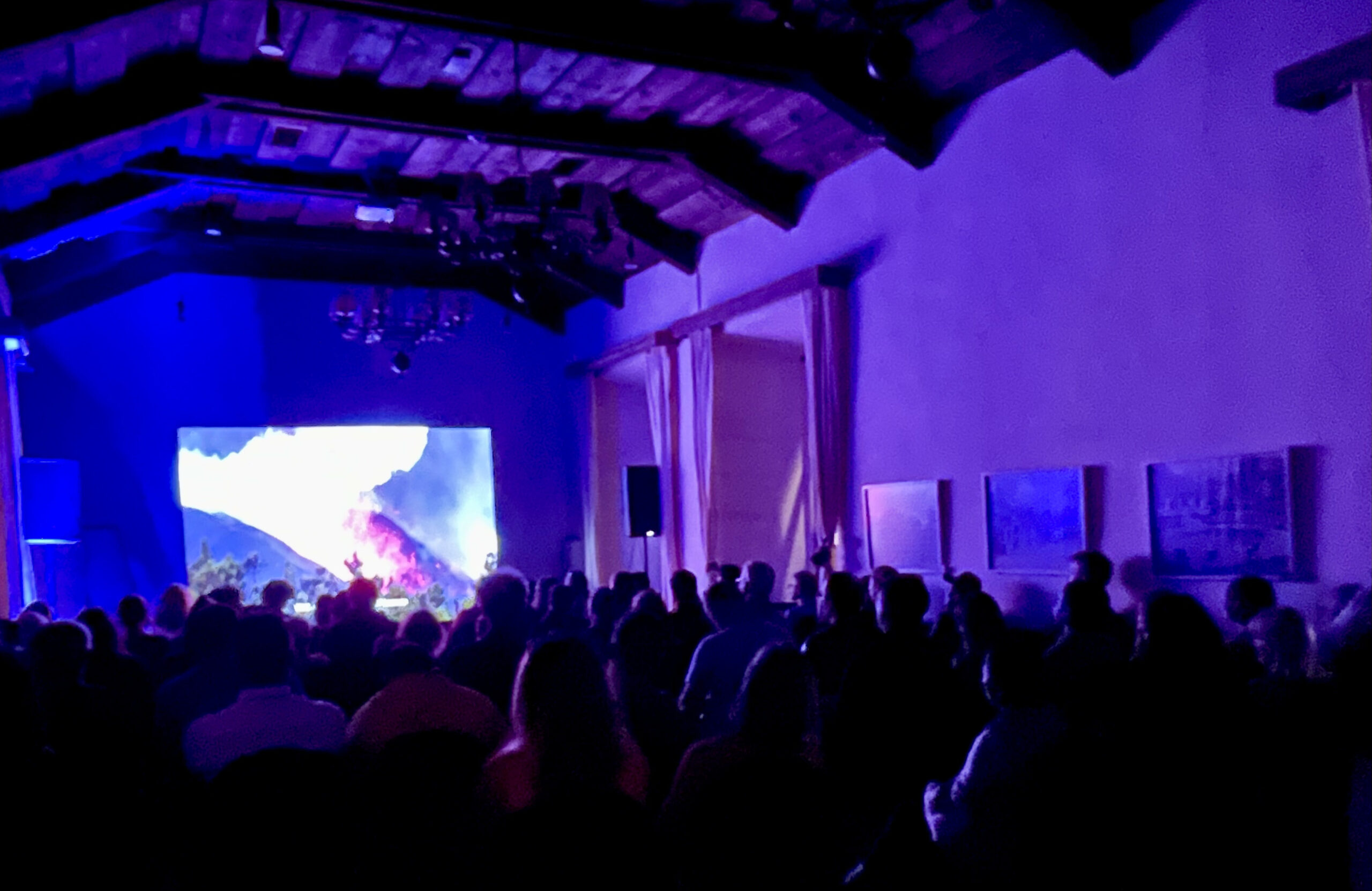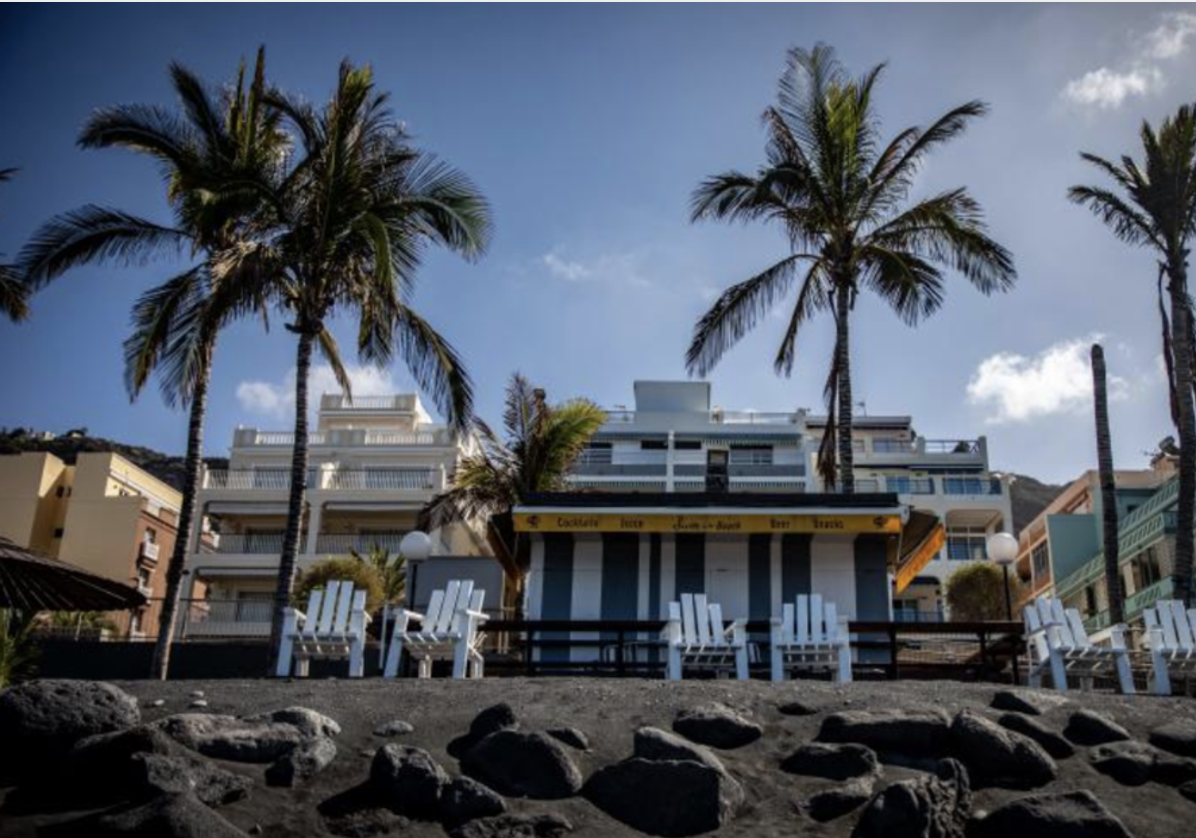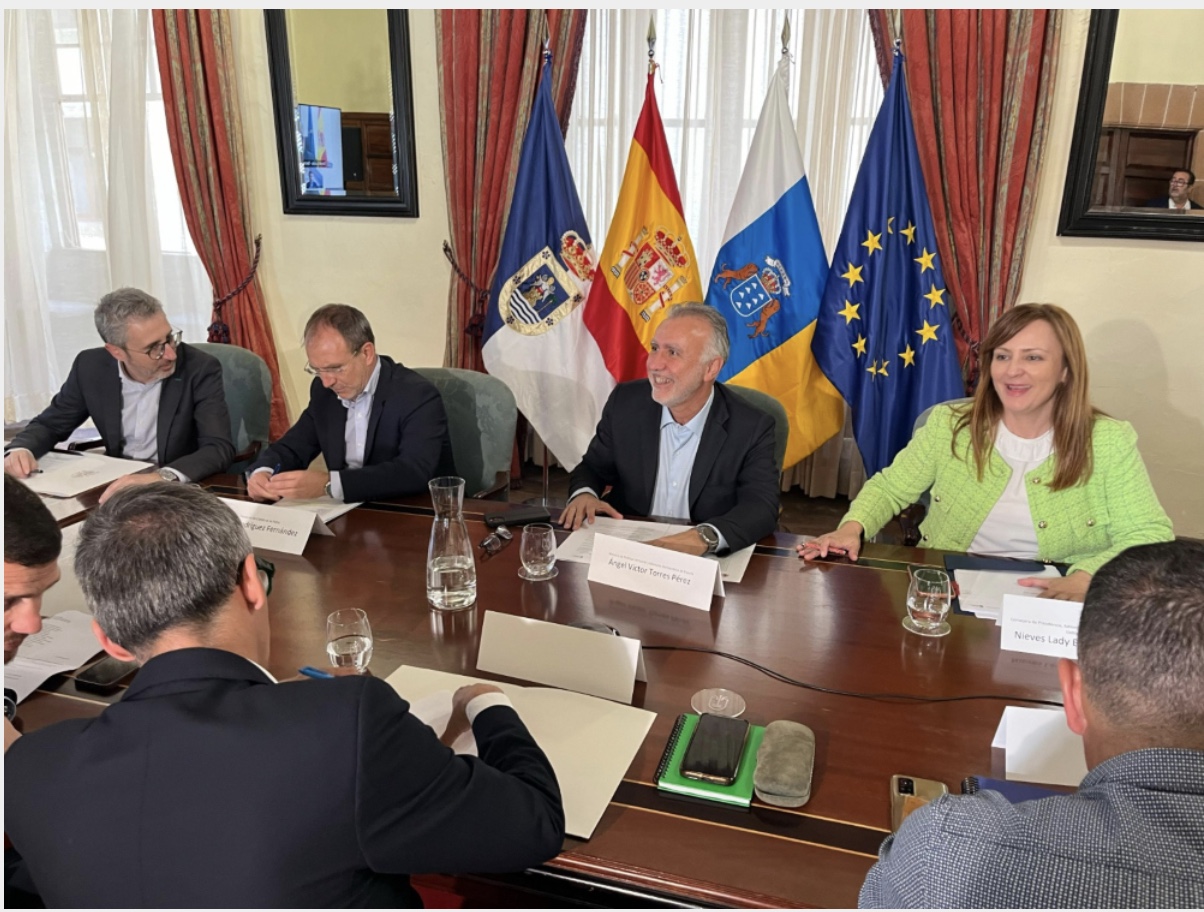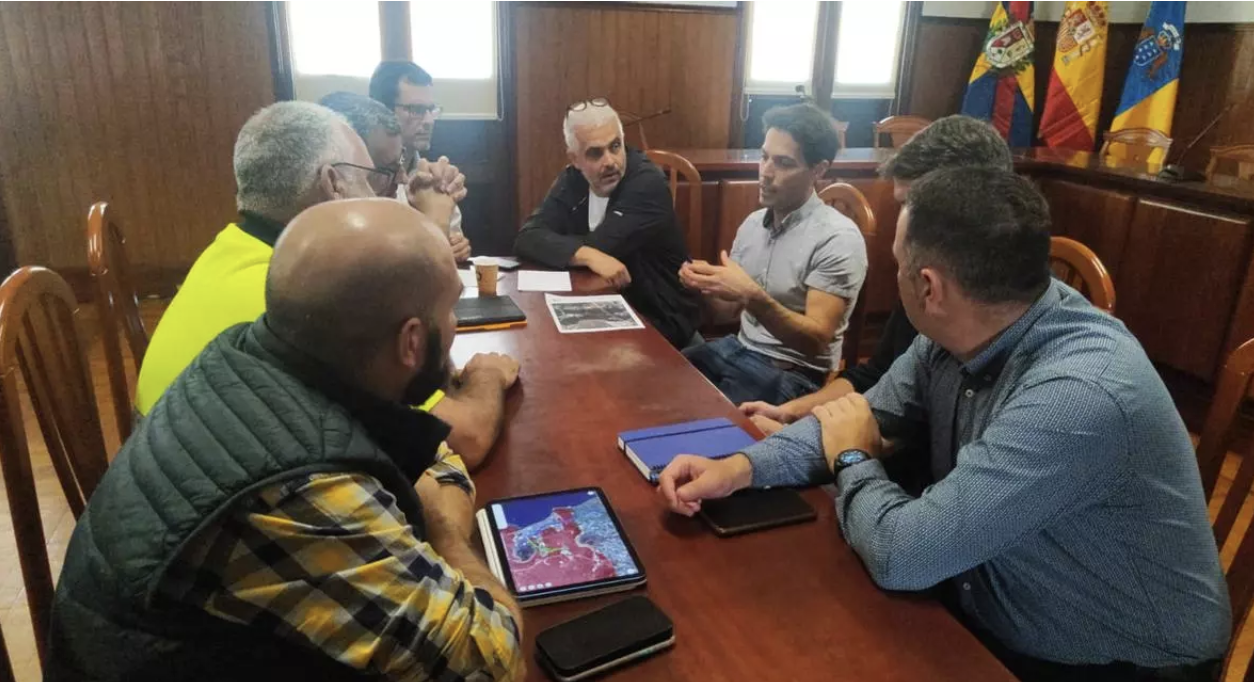04 Mar La Palma Reconstruction – February 2024

La Palma’s Reconstruction: February 2024 Update
Here, we collect and summarise news from across La Palma regarding science in La Palma reconstruction efforts, aid provided to residents and industries, and other relevant news. Sources: La Palma Ahora, Cabildo de La Palma, El Time, ABC España, and El Valle de Aridane.
Science

The showing of GeoTenerife’s co-produced documentary Lava Bombs: Truths Behind the Volcano at Cities on Volcanoes.
GeoTenerife attends Cities on Volcanoes, Guatemala: GeoTenerife and international collaborators share their research and lessons learnt from La Palma with a global volcanological audience:
- Presentations about the VolcanoStories project and a showing of GeoTenerife’s co-produced documentary Lava Bombs: Truths Behind the Volcano,
- GeoTenerife led a panel discussion about “Living on volcanoes” guided by questions submitted from residents of La Palma to a panel made up of with Dr Stavros Meletlidis (Instituto Geográfico Nacional), Eugenio Fraile Nuez (IEO-CSIC), and Dr Sam MItchell (The chair of IAVCEI commission on Submarine Volcanism)
- GeoTenerife also ran an international workshop for journalists on reporting during an emergency.
- Volcán De Tajogaite: The name “Volcán De Tajogaite” has been officially announced by the Cabildo de La Palma as the name for the volcanic cone that produced the 2021 eruption on La Palma. This was chosen through various votes, in which around 60% of respondents preferred this name
- National Volcanological Centre: The Government of the Canary Islands, through the counsellor of the President, has supported locating the National Volcanological Centre in La Palma. There is still ongoing debate whether to locate the centre in La Palma or Tenerife.
- Post-eruption magma storage: The University of Granada are studying where magma has accumulated after the eruption, using seismic data to image the subsurface, using a large, island-wide network of 35 broadband seismometers.
- Post-eruption geotourism: Researchers at the University of La Laguna have identified 16 areas of geotourism interest following the eruption. Both natural and cultural sites have been considered, following the principle of accessible tourism of the World Tourism Organisation. Six of the sites are volcanic products from the 2021 eruption, and the remaining 10 including important existing sites such as the viewpoints at Tacande, Montaña Rajada and Montaña Cogote.
- Recovery of fish: A study from marine biologists at the University of La Laguna have found that around the lava deltas formed by the 2021 eruption, fish are the species that have most rapidly colonised the new marine area. The recovery was analysed 2, 4, 5, and 7 months after the end of the eruption, and found that since the end of the eruption, around two thirds of all species found on the neighbouring 1949 lava deltas were found on the 2021 lava deltas.
- DELTA project: The Department of Ecological Transition of the Government of the Canary Islands has presented the Delta project, which will monitor the marine areas affected by the lava deltas and propose permanent installations to do this. The main focuses of the study are biodiversity and sustainability, and it is hoped the project can generate a research-based economy.
- Volcanic ash in concrete: Chemistry and Construction staff and students from the Polytechnic Institute of Secondary Education (IES) of Las Palmas de Gran Canaria are studying the possibility of using ash from the Tajogaite volcano to reduce the amount of cement used to manufacture mortar and concrete.
- Reopening of La Bombilla and Puerto Naos:
-
- More bus services are being implemented to serve the areas of La Bombilla and Puerto Naos that have been opened up for residents to return. These bus services connect the coast towns to Los Llanos de Aridane.
-

30 families now live permanently in Puerto Naos, El Time (2024).
- 295 homes have now been recovered, although very few families have returned to the towns, thought to be partly because many of the services in the area are still non-operational or are in parts that are still restricted due to their gas emissions. As of the start of February, only 30 families have returned to permanently live in Puerto Naos, although many more have used their homes since being allowed to return.
- The ‘de-escalation’ of aid to the residents of La Bombilla and Puerto Naos has been discussed in a meeting between the Cabildo de La Palma’s Commissioner for Reconstruction Héctor Izquierdo and representatives from the two affected settlements.
- Two kiosks on Puerto Naos beach have been authorised to reopen, and the Cabildo de La Palma has installed six additional CO2 meters around the beach area.
Aid
-
Current aid summary: The public resources reaching La Palma after the volcano have reached €950 million. Around €50 million of this has gone to additional aid for lost housing, or other related housing works, and €238 million for the insurance consortium.
Reconstruction
- Agricultural reconstruction decree: The Government of the Canary Islands has presented a draft of the decree law governing the agricultural recovery of La Palma, with many differences compared to the previous draft. A total of 365 hectares of lava flows will potentially be made available for recovery (75% of pre-eruptive agricultural land), conditional on the geological conditions of different areas of the flows. Owners in plots on lavas >10m thick can either choose to assess the viability of their recovery on the flows or relocate to other simpler plots on the lava purchased by the Government. Furthermore, the Government offers the option for owners to sell their old plots to the Government, based on their value in 2021 prior to the eruption. For two weeks in February, a consultation period for the decree was opened at the GESPLAN offices in El Paso.
-
Water recovery: Work is ongoing to recovery drinking water to the coastal areas Corujo and Cabrera in Tazacorte, that were both affected by the eruption and have been without drinking water in their homes since.
- Protection of new land: Territorial planning have delimited the areas affected by the volcano that will become a protected natural space. However, it is not currently known what will happen to the people who live in these areas or lived in the area before the eruption and had their homes destroyed, and solutions are currently being discussed.
- Recovery of La Laguna School: The reconstruction of the CEIP school in La Laguna, which was partially destroyed by the eruption, is one of several recovery projects being streamlined by the Government of the Canary Islands. This follows previous complaints as the school’s recovery had been promised for many months without any action, with signatures collected by those connected to the school to demand immediate reconstruction.
- Agricultural recovery: In Tazacorte, 42 licenses have already been granted to farms to recover their banana plantations that were affected by the eruption in 2021. In areas that were destroyed by lava flows, the plantations are being recovered by flattening and terracing the lava flows (if safe to do so) and covering this ground with ~80 cm of earth, consisting of 70% soil and 30% volcanic ash.



No Comments